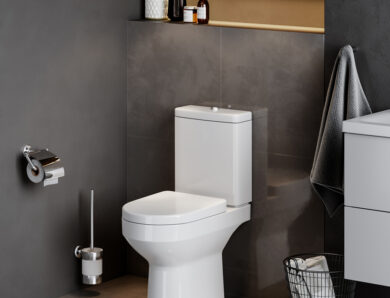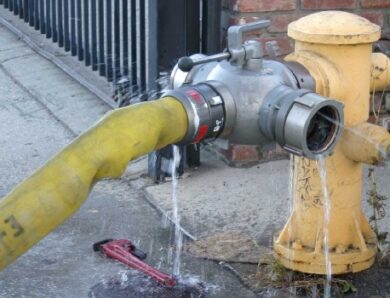How to remove the chuck from the drill and replace it depending on the type
When the drill is working properly, then the user has no questions, but there are cases, requiring its disassembly, many are stunned, solving the problem: how to remove the cartridge from the drill. To properly perform such an operation, you need to know, how the cartridge is attached to the shaft, and then start dismantling.
Classification of cartridges
There are the following types of cartridges:
- clamping action or self-clamping device;
- collet type sds devices;
- cams.
On a drill with a quick-release chuck you can change a drill or other nozzle quickly enough, no additional devices need to be used. Cartridges of the first option are divided into one- and a two-clutch device.
Single-clutch devices have a shaft locking system, which is triggered when replacing equipment. They have a significant negative point - very low strength of the fixing elements, the outer parts of the cartridge are made of plastic, which greatly increases their damage and breakage of the whole device.
Repair of a cartridge of this type is not provided - only replacement.
Manufacturers put cam products on percussion models and perforators, because their design is stronger - mostly turnkey cartridges are used here, for reliable fastening of a drill.
Collet type cartridge was created in the 70s of last century, its design differs in that, that in the tail there are two grooves, and the drill should be screwed in movements to deepen on 40 mm. IS 4 желобка: 2 fix, 2 - to direct the wedges, the cutting tool is fixed by locking balls.
In the classic gear device, the tightening adjustment is performed using a chuck wrench, which comes with the drill. To unscrew the cartridge correctly, it is necessary to follow the recommendations of an experienced master, to do this, watch this video:
mounting methods
The cartridge on a shaft in an electric or manual drill fastens in two ways - conical connection and a carving., so the varieties here are minimal. In practice, there are devices with metric or inch threads, and on the body of the product, even the smallest is always marked.
Example, designation of this type 1,5-15M13x1,2 is deciphered so:
- 1,5-15 Is the diameter of the tail of the cutting tool in millimeters;
- M13 - metric thread with a diameter 13 mm;
- 1,2 - thread pitch.
When using a thread in inches - UNF and specify the diameter: 1/2 «. This type of connection is considered international and is used in all instruments of foreign manufacturers. For special ??reliability on a shaft put a stopper, in the form of a screw on the left thread - this must be taken into account, when confused, how to disassemble a cartridge of an imported drill. It is necessary to unscrew it only clockwise.
The second method uses a Morse taper, which today is more often called a tool cone. The shaft has a conical part at the end, on which the device is mounted, a small effort must be made to make a tight connection. The labeling is as follows: B10, where the letter indicates the use of a cone, and the number is the diameter of the tail of the cutting tool. This type of mount is common in screwdrivers.
morse taper
Some drills are equipped with an adapter (adapter) for the clamping mechanism, that allows to carry out drilling with the maximum accuracy.
Problems of the cartridge mechanism
In modern models drills, such, like Interskol or Makita, fixing of a drill or other nozzles is carried out by the cartridge with the cam mechanism: 3 or 4 cam securely hold the cutting tool, they can move only along the axis of the drill shaft. The quick-release chuck is adjustable manually, more complex designs, used in modern drills - with a wrench.
A beaten clamp may occur during operation, the reason is wear of cams during long operation. Scanning and digitizing of the printed is carried out as follows: the device must be removed from the shaft, the same steps are required when jamming the drill, because it can be removed only after complete disassembly of the cartridge part of the product.
There is also such malfunction: the chuck rotates relative to the tool shaft. The reason for this behavior is damage to the threaded part of the device mounting, or the landing cone has sagged. The way out of this situation is to change the cartridge for a working one.
Tool for work
Replacing the drill chuck is easy, if you know the design of this unit and the methods of its attachment. You will need a simple set of tools to carry out the repair:
- metalwork vices, can be used non-standard, and a reduced version for household needs;
- steel hammer;
- carpenter's kiyanka;
- pliers or pliers;
- pipe wrench of medium size;
- set of wrenches;
- caliper;
- screwdriver;
- file;
- sandpaper for grinding.
The list indicates the minimum set, there are situations, when other metalwork devices may be needed.
dismantle the cartridge
Depending on the method of mounting the cartridge mechanism, disassembly methods will be different.
Threaded connection
It is necessary to disassemble such design in such order.
- Carefully unscrew the locking screw.
- Unscrew the cartridge counterclockwise, if the thread is tightened on the conscience, clamp the tool shaft in the vise. A gas wrench is used for unscrewing. Then remove the device and inspect it for integrity and serviceability.
- If the drill is stuck in the lips, then we do not inflict rage, but accurate blows with a hammer by knocking on the cams from above.
Installation is carried out in reverse order. When twisting a new device, the shaft must be locked by turning with your free hand. We tighten the locking device last. To help home craftsmen video:
cone connection
It is quite easy to remove the cartridge from the conical part of the shaft. The drill kit must have a special device for this purpose, but many experienced craftsmen use this method: turn the tool drill down, fix it and even blows with a hammer on the back of the device knocked out of the shaft.
After dismantling it is necessary to grind conical surfaces by means of an emery cloth, if there are surface burrs, then remove them with a file. The new cartridge is installed in place even easier - with the blows of a mallet on the floor, it sits tightly on the joint.
Users need to remember, that the removal of a drill or other nozzle, when they were jammed in the cartridge, requires certain skills and abilities to handle metalwork tools, but in any case it is necessary to dismantle the device. If the chuck on the drill has failed, then it needs to be replaced.


